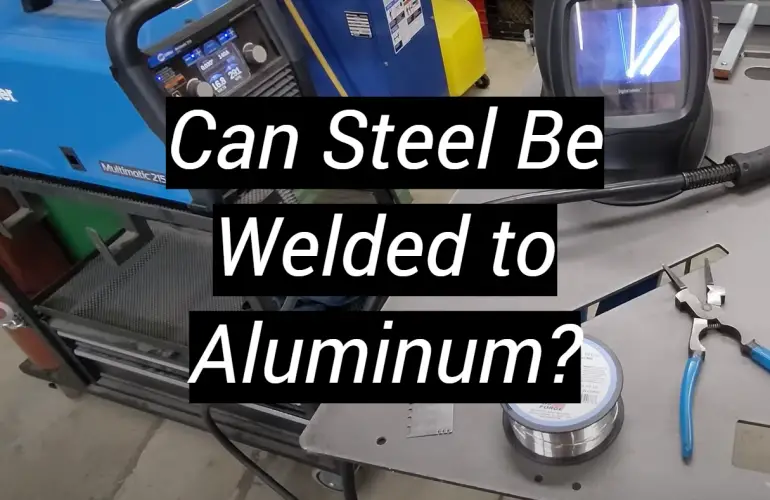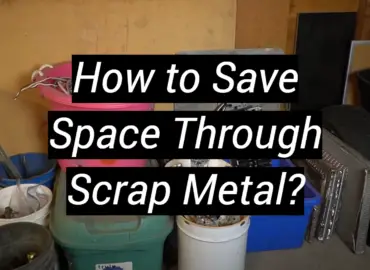Are you considering joining two metal materials for your next building project? If so, it’s important to understand the nuances of welding different metals together.
Welding steel and aluminum can present some unique challenges that don’t arise when you are welding only one type of material.
In this blog post, we will learn how to weld steel and aluminum properly. We will need to use the right tools and avoid making common mistakes. By learning these techniques, we can build anything we want!
Why You Can’t Weld Steel to Aluminum?
Bimetallic Transitions
When you want to join two pieces of material together, it is important to create a transition piece between them. This transition piece (known as a bimetallic transition) helps reduce the risk of tiny holes in the weld, while also allowing some thermal expansion and contraction when the material is heated up during welding.
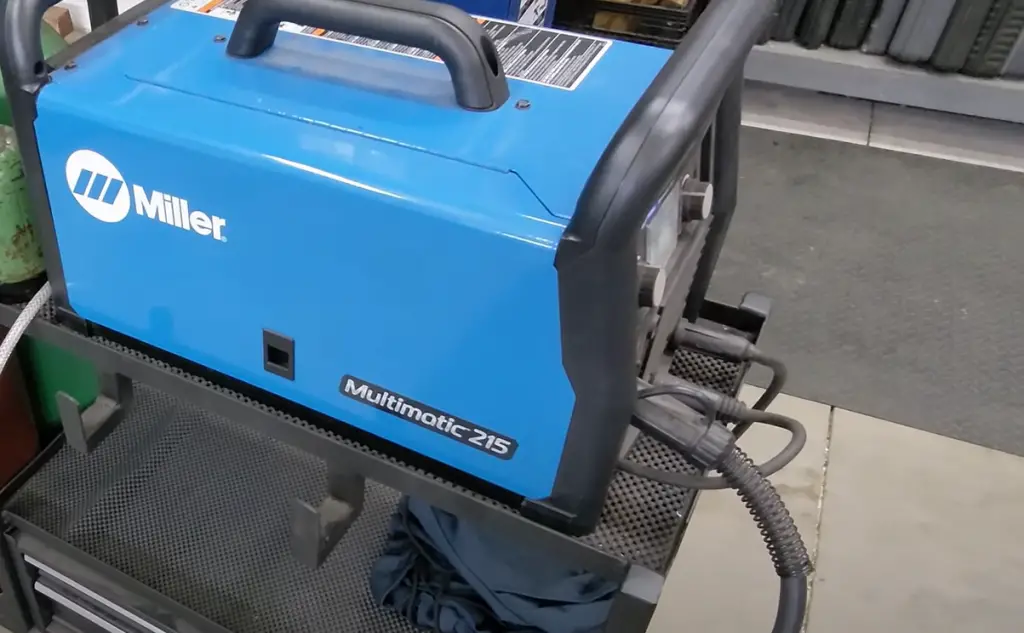
You need to use two different metals to make a bimetallic transition. A good choice is to use a nickel-based alloy as the connecting material between the two materials.
Nickel alloys are used extensively in welding because they can handle high temperatures without degrading.[2]
Aluminizing
This is when you put a thin layer of aluminum on top of the metal. This can help the metal resist corrosion, be stronger, and be more flexible.
You need to be careful when welding aluminized steel to aluminum. Aluminium melts at a lower temperature than steel, so if you overheat the aluminum while welding, it will melt and ruin the weld joint.
Brazing
Brazing is a popular method of joining two pieces of metal together by using a filler material, such as brass or bronze. This method is best used when you don’t want to risk melting the steel or aluminum during the welding process.
When brazing, it’s important to use the right temperature and flux to prevent the metals from becoming fused together.
Always wear the proper safety equipment and follow instructions carefully when performing any welding, brazing, or soldering procedure.
Bonding
If you want to join two pieces of metal together without welding or brazing, you can try bonding. Bonding is a process where an adhesive is used to bond the two materials together.
When you want to attach aluminum to steel, you must use the right kind of glue and follow the instructions carefully.
The right adhesive will help make a strong connection between the two materials, while also avoiding any potential problems in the future.
Mechanical Fastening
This is when you use mechanical fasteners such as bolts or screws to join two pieces of metal together.
This method is best used when you don’t want to risk melting the material during the welding process and when you need a stronger joint than using a bimetallic transition.
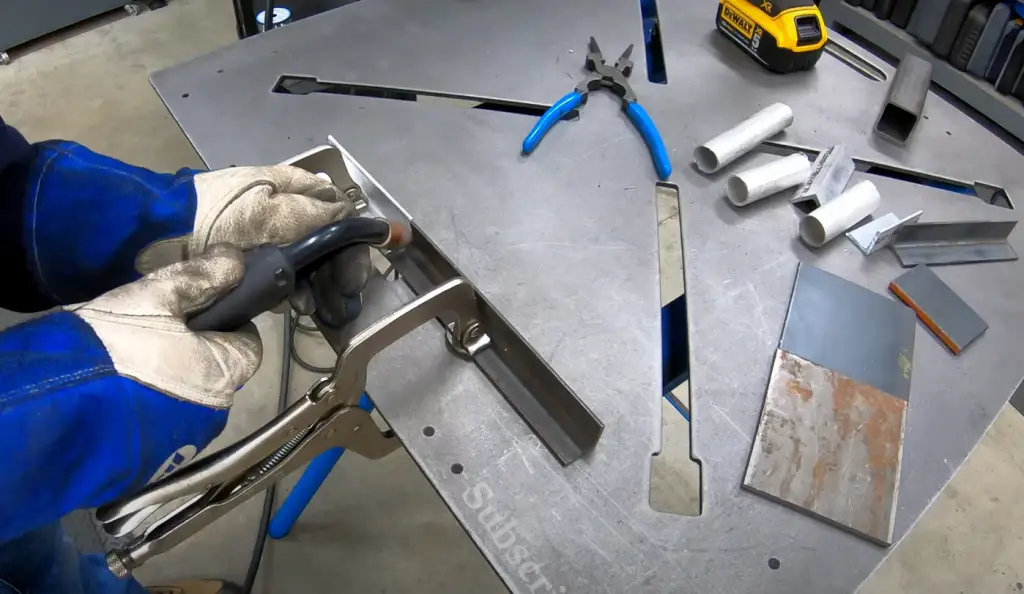
When attaching aluminum to steel, it’s important to use the right kind of fastener for the job. Different metals require different fasteners, so always consult with an expert before starting your project.
Galvanic Corrosion
When two different metals are joined together, it is possible for galvanic corrosion to occur. This occurs when the more reactive metal (such as aluminum) corrodes due to a chemical reaction with the less reactive metal (such as steel).
To prevent this from happening, you should use a bimetallic transition between the two materials and/or use an adhesive when attaching them. [2]
Why the Need to Weld Aluminium to Steel?
Sometimes, it is necessary to join aluminum and steel together for a certain project. For example, you may need to use both materials to build a frame or body for an automotive part. Steel provides strength and durability while aluminum provides flexibility.
When you are joining aluminum and steel together, it is important to use the right technique.
Why is Aluminum Difficult to Join Steel?
Aluminum is a softer metal than steel, and it is harder to join the two materials together. This is because aluminum melts at lower temperatures than steel. If you overheat aluminum while welding, it will melt and ruin the weld joint.
Additionally, galvanic corrosion can occur when dissimilar metals are joined together. To prevent this from happening, you should use a bimetallic transition between the two materials and/or use an adhesive when attaching them. [1]
How do you Join Aluminium to Steel?
There are a few different ways to join aluminum and steel. You can weld them together, braze them, bond them, or use mechanical fasteners. Each method has good and bad parts. You need to pick the right method for your project.
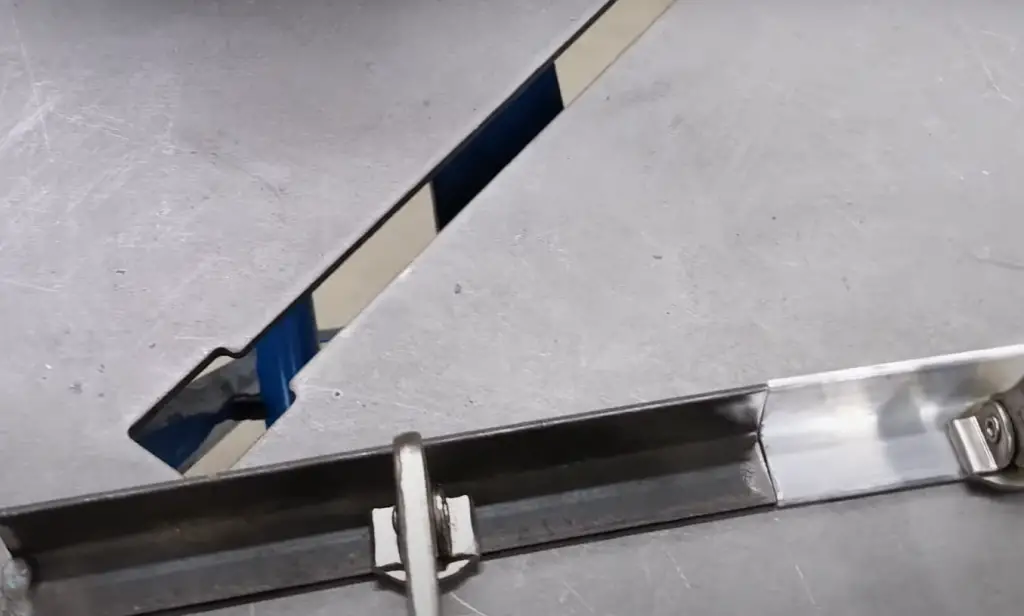
And always wear the right safety gear when joining metals together using welding, brazing, or soldering–and follow the instructions carefully.
FAQ
How do you weld aluminum and steel together?
Welding aluminum and steel together can be tricky. The metals have different melting temperatures.
So, it is best to use a low temperature flux core welding wire. Also, use a lower amperage when welding aluminum and steel together.
Can you braze aluminum and steel together?
Yes, you can join aluminum and steel together using a bimetallic transition between the two metals. This will help to prevent galvanic corrosion and it will also make the joint stronger than if you were just using an adhesive.
Can steel be bonded to aluminum?
Yes, you can attach steel to aluminum by using an adhesive like epoxy or super glue. Make sure to use the right kind of adhesive and follow the directions. This will help make a strong connection between the two materials and also help prevent any potential problems later on.
Why can’t you weld aluminum to steel?
Welding aluminum and steel together is difficult because of their different melting temperatures.
Aluminum melts at a lower temperature than steel, so it is easy to overheat the aluminum when welding them together. If the aluminum gets too hot, it will melt and ruin the weld joint.
What metals can not be welded together?
Metals that cannot be welded together include lithium, brass, copper, and magnesium. It is generally not recommended to attempt welding these metals because they can react unpredictably when exposed to heat.
Additionally, galvanic corrosion can occur when two dissimilar metals are joined together. To prevent this from happening, you should use a bimetallic transition between the two materials and/or use an adhesive when attaching them.
Does regular steel react with aluminum?
Yes, regular steel and aluminum can react with each other. Galvanic corrosion can occur when dissimilar metals are joined together.
What happens when aluminum touches steel?
When two different metals touch each other, one metal can start to corrode the other. This is called galvanic corrosion. To prevent this from happening, you should use a bimetallic transition between the two materials and/or use an adhesive when attaching them.
Additionally, it is important to make sure that the metals are completely clean and free of contaminants before attempting to join them.
Why is it important to use the right kind of fasteners ?
When you want to join aluminum and steel together, it is important to use the right kind of fastener. If you don’t, the metals could corrode or the joint could be weak and fail.
To make sure the joint is strong and secure, use the right type of fastener and clean the metals before you start.
When should you avoid welding aluminum and steel together?
Most people do not recommend welding aluminum and steel together because it can cause problems. If the aluminum gets too hot, it will melt and ruin the weld joint. To avoid this from happening, use a bimetallic transition between the two metals or use an adhesive when attaching them.
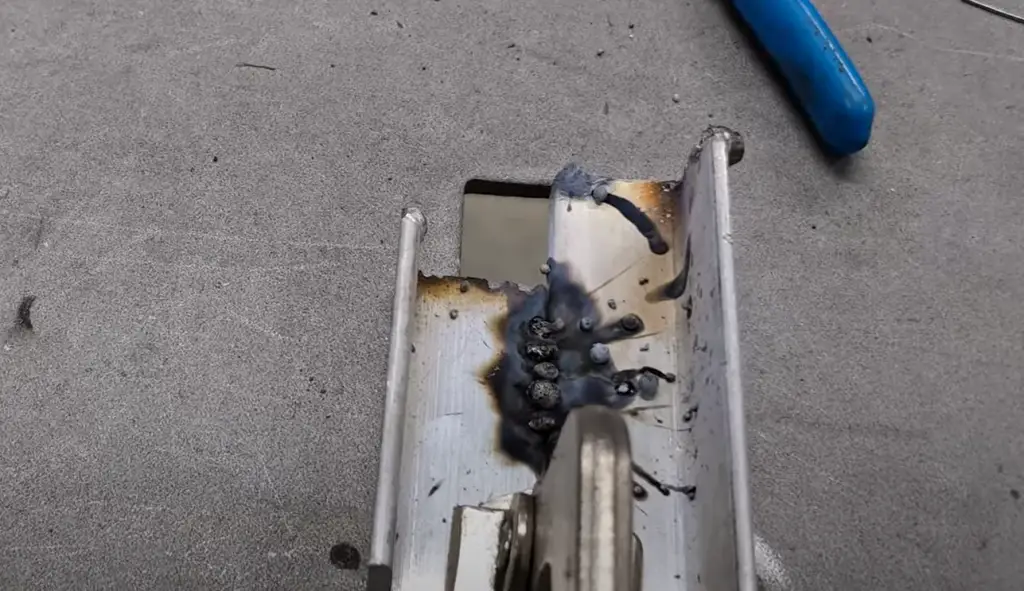
Additionally, if you still decide to weld the two metals together, use a low temperature flux core welding wire and make sure to follow all of the manufacturer’s instructions carefully.
Does welding aluminum and steel require special equipment?
Yes, welding aluminum and steel requires special equipment such as a low temperature flux core welding wire. Additionally, make sure to follow all of the manufacturer’s instructions carefully when using this type of welding wire.
Do aluminum and steel have different welding temperatures?
Yes, aluminum and steel have different welding temperatures. Aluminum melts at a lower temperature than steel, so you will need to use a lower welding temperature.
You will also need to use special equipment, like low temperature flux core welding wire. Finally, make sure that the metals are clean before trying to weld them together.
Do aluminum and steel create a galvanic reaction?
Yes, aluminum and steel can create a galvanic reaction when joined together. To avoid this from occurring, use a bimetallic transition between the two metals or use an adhesive when attaching them.
Additionally, make sure that the metals are completely clean and free of contaminants before attempting to join them. Finally, you should use the right type of fastener and follow all of the manufacturer’s instructions carefully.
Does welding aluminum and steel require special skill?
Yes, welding aluminum and steel requires special skill. You will need to use the right type of equipment, like low temperature flux core welding wire. Additionally, it is important to make sure that the metals are clean before welding them together.
Finally, you should always follow all of the manufacturer’s instructions carefully when attempting to weld aluminum and steel.
Can steel be welded to aluminum?
You can weld steel to aluminum by using a low temperature flux core welding wire. Make sure the metals are clean before you start welding.
To make the connection stronger and prevent corrosion, use adhesive or mechanical fasteners such as bolts or screws.
Does welding aluminum and steel require a lot of practice?
Yes, welding aluminum and steel does require a lot of practice. It is important to use the right type of equipment, like low temperature flux core welding wire. Additionally, make sure that the metals are clean before attempting to weld them together.
Which type of welding is best for aluminum and steel?
The best way to weld aluminum and steel together is by using flux core welding. You need to use low temperature flux core welding wire because aluminum melts at a lower temperature.
What else should welders know when welding aluminum and steel?
Welders should be aware of the possibility of galvanic corrosion when joining aluminum and steel. To prevent this, use a bimetallic transition or adhesive between the two metals.
Additionally, make sure that both materials are free of any contaminants before attempting to join them together.
How often should welders check their equipment?
Welders should check their equipment regularly to ensure that it is in proper working order. This means inspecting all of the welding components before each use, and making sure they are free of any damage or wear.
Additionally, welders should replace consumable parts such as nozzles, tips, electrodes, and flux core when needed.
Useful Video: Welding Steel to Aluminum (And Other Inappropriate Welding)
Conclusion
Steel and aluminum are two of the most common materials used in construction and manufacturing. While steel is strong and durable, it is also heavy and difficult to work with. Aluminum is lightweight and easier to manipulate, but it is not as strong as steel.
So, can these two materials be welded together? The answer is yes, but it requires a special process known as friction welding. If you need to join steel and aluminum parts together, contact a reputable welding company that has experience with this process.
References:
- https://www.twi-global.com/technical-knowledge/faqs/aluminium-welding/aluminium-to-steel
- https://makeitfrommetal.com/can-steel-be-welded-to-aluminum/

